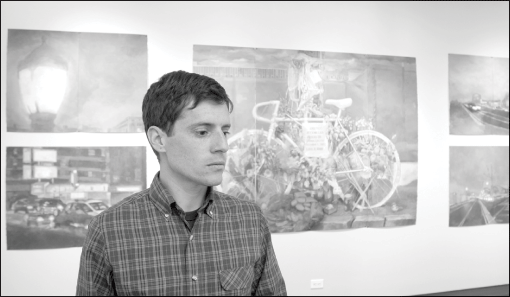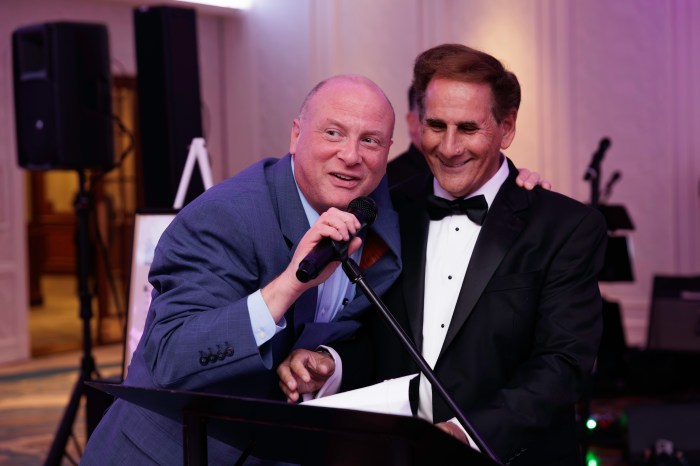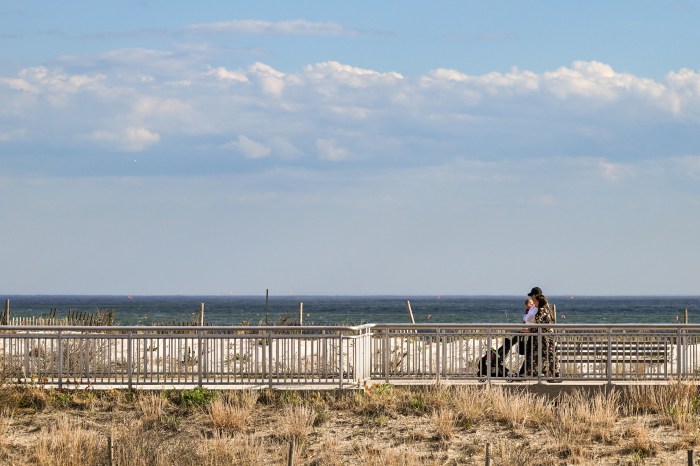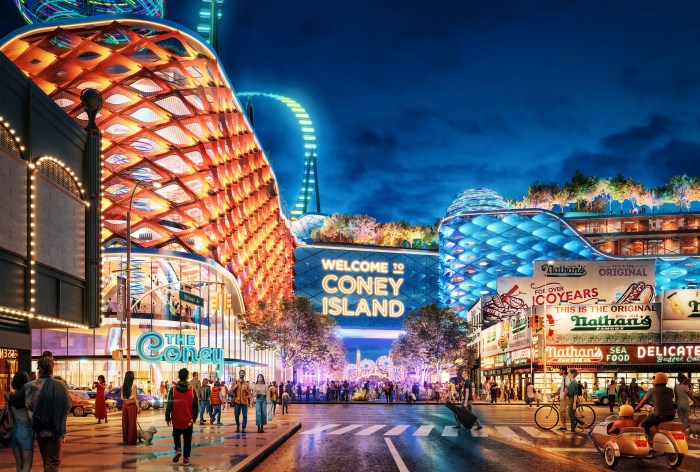By Jefferson Siegel
True art takes note not merely of form but also of what lies behind.
— Mahatma Gandhi
Seth Mulvey, a former special education teacher at a San Francisco elementary school, moved to New York two years ago and enrolled in the illustration program at the School of Visual Arts. A bike rider, Mulvey began hearing about a succession of cyclists killed in motor vehicle accidents around the city. The tragic toll hit home when a fellow S.V.A. colleague, filmmaker Derek Lake, was killed by a truck at Houston St. and LaGuardia Pl. on the morning of June 26 last year.
“I became aware of what happened by looking at other accidents that cyclists were involved in,” Mulvey said. Mulvey spoke last Fri., April 27, as he sat in a quiet room filled with paintings in the School of Visual Arts Gallery of Chelsea’s Starrett-Lehigh building. From the gallery’s 15th-floor balcony one can look south along the Hudson River bike path all the way Downtown.
On the night of Dec. 1, 2006, a car drove several miles down that bike path, its driver under the influence of alcohol. The car struck cyclist Eric Ng, 22, whose own young life was just getting up to speed.
Mulvey, now 32, has been cycling for seven years.
“I go into a place where I become more aware of what’s going on,” he said of his two-wheeled travels.
He sat in front of five paintings of the tragic scene near Clarkson St. where Ng was struck and killed. The acrylic-on-rag paper creations represent Mulvey’s junior year thesis project.
When on his bike, Mulvey looks out for cars, patterns of traffic and other people. For his thesis, he chose to focus on Eric Ng’s last ride.
“If I’m going to ride my bike on Houston St., I know there’s a big level of risk involved,” he mused. “But if you’re on the bike path, you’re supposed to be in a safe place.”
Mulvey started visiting the memorial ghost bike for Ng near Pier 40.
“How can you convey the pain, the feeling at that intersection?” he wondered as he sketched the scene from different angles. Mulvey took photos around the area and made exact measurements of the ghost bike.
The first painting he completed presents the most obvious scenario. Viewed from above, a cyclist pedals north on the path as headlights approach in the distance. Low clouds are illuminated by ambient light from the ground. Cars whiz by on the road beyond, perhaps foreshadowing the imminent collision of metal and flesh and bone.
“How could they not see each other?” is the painful inquiry Mulvey wrote directly onto the painting. “It’s just the question that won’t go away,” he said.
The largest of the five works, a life-size painting of the ghost bike, was completed next. Like a time-lapse image, elements from various seasons of the year adorn the bike. Summer flowers adorn the memorial as a Christmas wreath lies by one wheel. A tiny bird sits looking up at the cycle, next to a box of Hanukkah gelt left by a mourner.
“I would go back every few days over the weeks and see what was added,” Mulvey explained, pointing to a can of Dr. Pepper near a pedal.
Mulvey worked simultaneously on the final three paintings.
“Those are the last things he saw and I wanted to take at look at those,” he explained. On one, an image of cars driving by is like an unremarkable snapshot.
Another painting — two converging views of the path on the same canvas, like a split-screen photo — is more sobering.
“They were both looking up and down that street, like you’ve done a million times,” Mulvey said, his voice lowering, “their two paths intersected there. I wanted to see if I could see from both of their perspectives.”
Perhaps the most poignant is the simplest canvas, a painting of the glowing orb of a streetlight, its aura diffused by mist.
“It captures this bright explosion, the way the light looks,” Mulvey said. The interpretations are numerous: The lights go out; one sees a momentary flash of light when one hits his or her head; or the light was possibly the last thing Eric Ng saw.
None of the works depict the actual collision.
Mulvey said he sought input from Ng’s friends so as not to hurt any feelings.
“Under the surface, I’m more aware,” he said. “I think there’s a little more sadness and a little more quiet.”
Mulvey’s previous work has explored various aspects of human affinities and intimate, romantic relationships.
“I did one of a father holding a child,” he recalled. “It was a protective relationship.”
A series on the code breakers of World War II was more cerebral.
“It was bearing witness to intelligence and the use of intelligence,” he explained.
The School of Visual Arts show ran for 10 days and was taken down May 5. Mulvey rolled up the canvases and took them to his studio on E. Sixth St. in the East Village. He expressed hope that the paintings will find a more permanent venue for viewing by a larger audience.
“This is what I’ve meditated on for a while,” Mulvey said of the five paintings that consumed several months of his life. “I think that there’s definitely much more that can be portrayed. People can get hurt. People do get hurt.”

















